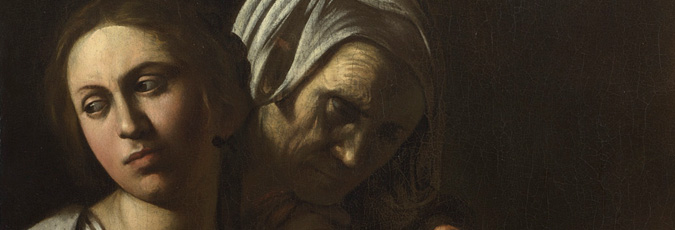Painting from life
Michelangelo Merisi da Caravaggio was born in Lombardy in northern Italy in 1571 where he trained before moving to Rome at the age of about twenty. He struggled at first to find success in Rome, producing hackwork and making copies of devotional paintings. He then joined the workshops of Antiveduto Gramatica (1569–1626) and Giuseppe Cesari (called Cavaliere d’Arpino) (1568–1640), where he specialised in painting fruit and flowers.
Caravaggio’s first independent works were of youths, musicians, cardsharps, and fortune tellers. They were considered highly original because of their everyday subject matter and naturalistic lighting. Caravaggio placed great importance on looking at nature, as is evident in his highly realistic still lifes, and claimed that painting still life required as much artistry as painting figures. Painting ‘dal naturale’ (from nature) was one of the most novel aspects of his art.
These early paintings attracted the attention of powerful and influential patrons, such as Cardinal Francesco Maria del Monte (1549–1627) and the Marchese Vincenzo Giustiniani (1564–1637), and their novelty was so remarkable that artists were still producing variations based on such themes even a quarter of a century later.
Top image: Detail from Michelangelo Merisi da Caravaggio, Salome receives the Head of John the Baptist, about 1609–10

